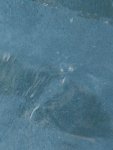I believe we have calcium nodules all over the bottom and walls of our pool. Our pool builder looked at our pool last week for a pipe leak (that's another story) and when I asked about the white spots he said they were "Calcium Nodules" and we can just scrub them off. We tried a wire brush (as he suggested) that did nothing and also tried a pumice stone and although that seems to help it does not remove completely and I can not see being able to do that all over the bottom of the pool. Is there any other options? and what causes this?
Thank you in advance for any advice!!



Thank you in advance for any advice!!





